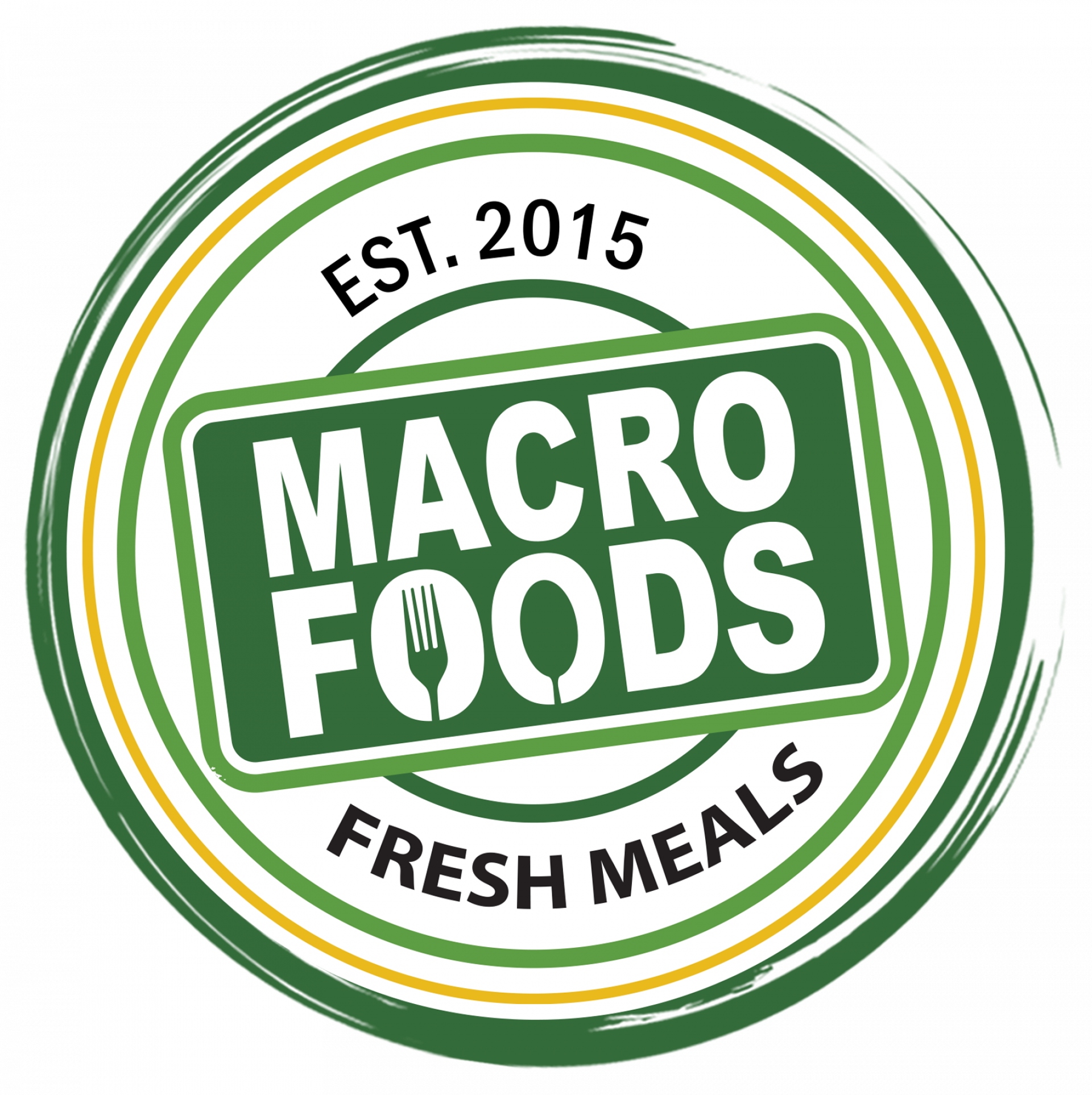
Key Highlights
- Boost muscle growth and speed up recovery by increasing your protein intake.
- Discover the importance of macro balancing and learn how to calculate your ideal ratios for muscle gain.
- Explore MacroFoods.ca's menu highlights, featuring high-protein meals like Keto Korean Beef Stirfry and Chicken Alfredo.
- Maximize your results by combining a protein-rich diet with a consistent strength training program.
- Get inspired by real success stories from MacroFoods.ca customers who have achieved incredible transformations.
Introduction
Building muscle mass and getting a well-defined body can seem tricky. Many people believe that eating less is the way to reach their goals. But what if we say that eating more might be the solution you need? This idea is known as the muscle-building paradox. To gain more muscle mass and lean muscle, you should actually eat more calories. It’s important to give your body the proper nutrients to help support muscle growth. That's where Macrofoods.ca comes in. We are here to help you when you're feeling too busy or overwhelmed.
Unpacking the Muscle-Building Paradox

Many people think that eating more leads to weight gain instead of building muscle. But in fitness, our bodies don't just follow a simple rule of calories in and calories out. To build muscle well, you must eat more calories than you burn. This is called caloric surplus. This extra energy gives your body what it needs to fix and build new muscle tissue.
Still, it isn't just about eating more calories. The secret is to make sure those extra calories come from good sources, especially protein. Protein is important for muscle protein synthesis, which is how our muscles are built and repaired. When you eat the right amount of protein, you provide your body with what it needs to grow new muscle mass.
The Science Behind Muscle Growth and Nutrition
Understanding how muscle growth works can help you in your fitness journey. It begins with muscle protein synthesis. This is when your body uses protein to fix and grow muscle fibers. This complicated process is activated by things like resistance training and eating enough protein.
Amino acids are the basic parts of protein and are very important in this process. When you eat protein, your body breaks it down into amino acids. Your body then uses these amino acids to make new proteins, which helps with muscle growth and repair.
By eating more protein and doing regular resistance training, you create a good setting for muscle protein synthesis.
Debunking Myths: Eating More vs. Overeating
One common mistake is thinking that eating more always means gaining body fat. It's true that getting too many calories can cause fat gain. However, eating more does not always mean you will get bigger.
The trick is to increase your calorie intake smartly. Focus on foods that have a lot of nutrients, especially those that are high in protein. By keeping track of your calorie intake and making sure you get a good amount from protein, you can support muscle growth. This way, you avoid adding unnecessary fat.
Keep in mind that building muscle requires a balance. You need to give your body the energy it needs to grow while also avoiding too many calories that can cause fat gain.
Essential Nutrients for Muscle Gain

While protein is important for muscle gain, don’t forget that a balanced diet includes more than just one nutrient. For the best muscle growth, you need three key macronutrients: proteins, carbohydrates, and fats.
Each one helps your body in a different way for muscle growth and health. When you mix them correctly, you get the energy for tough workouts, the building blocks needed for new muscle tissue, and support for your body’s many functions.
Proteins: The Building Blocks of Muscle
Protein is very important for building muscle. It gives your body the amino acids it needs to fix muscle tissue and create new muscle fibers. To reach your fitness goals, getting enough protein is a must.
If you want to build muscle, you need more protein each day than someone who doesn’t exercise. A good guideline is to eat about 1.6 to 2.2 grams of protein for every kilogram of body weight. It may sound like a lot, but it helps your body have the necessary parts for muscle protein synthesis.
Keep in mind that your body cannot store protein like it does with carbohydrates or fats. You should eat protein throughout the day. This keeps a steady amount of amino acids in your body for muscle repair and growth.
Carbohydrates: Fueling Your Muscle Growth
Carbohydrates often get a bad name, but they are your body's main source of energy. Energy is key for getting through tough workouts at the gym. When you eat carbohydrates, your body turns them into glucose. This glucose is stored as glycogen in your liver and muscles.
Choose complex carbohydrates like whole grains, fruits, and vegetables. These will give you steady energy. They help keep your blood sugar levels stable and stop energy drops. Steady energy is important for high-intensity exercise and building muscles.
It's essential to eat enough carbohydrates. They fuel your workouts, help your muscles recover, and keep your energy balanced overall.
Fats: The Often Misunderstood Nutrient
Fats often have a bad reputation because they are linked to body fat and weight gain. However, they are a key part of a balanced diet, especially if you want to gain muscle. Healthy fats are important for making hormones, keeping cells working well, and absorbing nutrients.
Adding healthy fats to your meals can help you reach your fitness goals instead of holding you back. They help control hormone levels, like testosterone, which is important for muscle growth and healing.
Try to add healthy fat sources like avocados, nuts, seeds, and olive oil to your food.
A Beginner's Guide to Macro Balancing for Muscle Gain
Macro balancing means changing how much protein, carbs, and fats you eat to reach your fitness goals. If you want to gain muscle, you need to find the right mix. This mix will help you work out better, recover from exercises, and boost muscle protein synthesis.
When you know what your body needs and change your macro intake, you can make a nutrition plan. This plan will help you make the most out of your muscle gain journey.
Understanding Your Body's Needs
Before you start calculating macros, it's important to figure out your maintenance calories. This is the number of calories you need to eat to stay at your current weight. Things like your age, gender, how active you are, and your body composition affect your maintenance calories.
After you get an idea of your maintenance calories, you can change your calorie intake based on what you want to achieve. If you're looking for muscle gain, aim for a caloric surplus of about 10-20%. This means eating a little more than what you burn.
Keep in mind that each person's body is unique. What works for one person might not work for you. You might need to try a few different things to discover the right macro balance for your body type and how active you are.
What You Will Need to Get Started
Stepping into macro tracking does not have to be hard. With the right tools, it can be easier and help you succeed in the long run.
A digital food scale is great for keeping control over portion sizes. You don’t need to worry about tricky math. There are many macro-tracking apps to make it simple. Keeping a food journal helps you track your meals, macros, and progress.
Also, think about using a meal delivery service like MacroFoods.ca. This makes things easier by giving you pre-portioned, balanced meals. It takes a load off meal prep and helps you reach your goals more easily.
Step 1: Calculating Your Macronutrient Ratios
Macro ratios show how much of each nutrient is in your diet. If you want to build muscle, a good place to start is with 40% carbohydrates, 30% protein, and 30% fats. You can change these amounts based on what you need and like.
Remember, these are just starting points. It’s important to watch how your body reacts. You may need to change things based on how hard you train, your body composition goals, and any food restrictions you have. Try different things and stay flexible to see what works best for you.
Step 2: Planning Your Meals with MacroFoods.ca
MacroFoods.ca makes sticking to your macro targets easier than ever with delicious, chef-prepared meals delivered to your doorstep. Simply select your meals from their diverse menu, which includes protein-packed options, tasty sides, and guilt-free treats. MacroFoods.ca takes the guesswork out of macro tracking.
Feature | Benefit |
Order reminders | Never miss a meal delivery. |
New menu alerts | Stay updated on exciting menu additions and options. |
Customizable meals | Tailor your meal plan to suit your dietary needs and preferences. |
Convenient delivery | Saves time and effort, allowing you to focus on other priorities. |
Step 3: Incorporating Strength Training
Nutrition is very important for muscle gain. But, doing a good strength training program is just as important. Resistance training helps your body create muscle protein. It also helps your muscles grow larger, which is called muscle hypertrophy.
When you do resistance training regularly, it causes tiny tears in your muscle fibers. Your body then works to fix these tears. It rebuilds the muscle tissue even stronger than before, which helps you gain muscle mass over time.
Try to have at least two to three strength training sessions each week. Make sure to work all major muscle groups. Also, remember to gradually increase the weight or the intensity of your training. This is called progressive overload, and it's key for muscle gain.
Step 4: Monitoring Your Progress and Adjusting Your Intake
Achieving sustainable muscle growth takes time and effort. It is important to be consistent and adaptable. You may not see results right away, as your body’s needs can change during your journey.
Keep track of your progress regularly. Pay attention to changes in your body composition, which includes muscle gain and fat loss. Also note your energy levels and how you feel overall. If you don’t see results after a few weeks, it is okay to rethink your calorie intake and macro ratios.
Remember, building muscle is a slow process. It requires patience, consistency, and a plan that works for you. The key is to listen to your body. Change your nutrition and training if needed. Also, celebrate your progress along the way.
MacroFoods.ca Menu Highlights for Muscle Builders

MacroFoods.ca knows that quick and tasty meals are important for your muscle-building goals. That’s why their menu offers a variety of high-protein meals to help you grow stronger.
You can choose from familiar comfort foods that are full of protein as well as dishes from around the world. MacroFoods.ca makes healthy eating easy and fun. Each meal is made with quality ingredients to help you take care of your body.
Keto Korean Beef Stirfry: A Muscle-Building Favorite
Treat your taste buds with the Keto Korean Beef Stirfry. This meal highlights soft, marinated Korean beef as the main ingredient. It provides a good source of lean protein. The tasty stir fry sauce gives a rich flavor that will have you wanting more.
Not only is it delicious, but the Keto Korean Beef Stirfry is also very good for you. It has low carbohydrates and is high in healthy fats. This makes it a great option for anyone on a keto diet or for those wanting to manage their carbs.
Chicken Alfredo: High-Protein Comfort Food
Comfort food gets better with MacroFoods.ca’s Chicken Alfredo. You have diced chicken breast cooked in a creamy and tasty sauce. It rests on a bed of pasta that is cooked just right, making this meal enjoyable and good for building muscle.
This classic dish helps increase your protein intake while keeping the flavor rich. Chicken breast is a lean source of protein, which helps build and repair muscle tissue. The sauce adds a tasty touch to satisfy your cravings.
Vegan Mushroom Blush Gnocchi: Plant-Based Power
Building lean muscle on a vegetarian diet is possible. MacroFoods.ca’s Vegan Mushroom Blush Gnocchi shows that plant-based meals can be tasty and help build muscle.
This dish has soft gnocchi in a rich blush sauce. It is full of protein from mushrooms and fresh vegetables. It’s a great way to support your workouts and meet your daily protein needs even without meat.
Keto Shrimp Rosé: Lean Protein Meets Decadent Flavor
Savor the tasty flavors of the Keto Shrimp Rosé while staying on track with your nutrition goals. This dish has juicy shrimp cooked in a rich, tomato-based rosé sauce. Each bite brings a wonderful mix of flavors.
Not only does the Keto Shrimp Rosé taste great, but it is also packed with nutrition. It offers lean protein and healthy fats. Shrimp is a great source of lean protein. It can help you feel full and support muscle growth.
Combining Diet and Exercise for Optimal Muscle Growth
Eating enough protein is essential for building muscle mass. However, to really boost your results, you need to combine it with regular exercise. Think of it this way: proper nutrition gives you the materials, while exercise forms the base for muscle growth.
Resistance training is key for muscle hypertrophy. It causes tiny tears in muscle fibers, which starts your body's repair and rebuild process. This is why getting enough protein intake is so important. It supplies the amino acids your body needs for effective muscle repair and growth.
The Role of Consistent Training in Muscle Building
Consistency is very important for resistance training. Your muscles adjust to the stress they face. This is why regular workouts are necessary for continued growth. When you often challenge your muscles with resistance training, you tell your body to adapt. It needs to handle heavier weights and more work.
These small tears in the muscles, which are fixed with good nutrition (especially protein), lead to stronger and bigger muscle fibers. This is how muscle growth happens.
Recovery: Why Rest Days and Nutrition Matter
Rest and recovery are very important for muscle growth, but they often do not get enough attention. When you exercise hard, it creates tiny tears in your muscle fibers. This is a good thing! Your body needs time to heal these tears so you can get stronger.
On your rest days, make sure to focus on your nutrition. This is key for helping your body recover. It’s important to have enough protein in your meals. Protein gives you amino acids, which help repair muscles. Also, eat enough carbohydrates to refill the energy stores used up during your workouts.
Success Stories: Real Results with MacroFoods.ca
MacroFoods.ca is more than a place for easy meal choices. It helps people live healthier and achieve their fitness goals. The focus on quality ingredients, balanced nutrition, and happy customers shows in the many success stories from those who made positive changes.
People wanting to lose weight or reach their best physical form can rely on MacroFoods.ca. It has become a trusted friend in their journey. They use fresh, high-quality ingredients, so every meal is not only tasty but also full of the nutrients needed to support a healthy and active lifestyle.
Before and After: From Skinny to Strong
John used to call himself a "skinny guy." He found it hard to gain muscle mass, no matter how long he spent in the gym. He thought his genetics made it impossible. Then he found out about MacroFoods.ca.
Curious about the idea of easy, macro-balanced meals, John decided to try it. He picked a meal plan for muscle gain. He was impressed by how good the food tasted and its quality.
Soon, John saw a difference in his body composition. He was gaining lean muscle while losing fat. His energy levels increased, and for the first time, he felt confident he could reach his fitness goals.
Testimonials: Why Customers Choose MacroFoods.ca for Fitness Goals
Customer testimonials show how much people love MacroFoods.ca and its positive effect on their fitness journeys. Many individuals talk about the easy-to-use service, the high-quality ingredients, and how tasty the meals are. They say MacroFoods.ca is now a key part of their daily lives.
Sarah, a busy professional balancing work and family, always cared about her health but found it hard to make time for cooking. She tried MacroFoods.ca and never looked back. "The convenience is amazing," she says. "Now, I can eat nutritious and tasty meals without losing valuable time with my family."
Conclusion
In conclusion, understanding the muscle-building paradox means clearing up myths and focusing on important nutrients for the best results. By balancing your macros and including strength training, you can reach your fitness goals well. Keep in mind that consistency is important. Rest days matter just as much as nutrition. If you want to begin this life-changing journey, sign up with MacroFoods.ca to get a custom menu that helps your muscle-building goals. Equip yourself with the right knowledge and feed your body for success. Start your journey to becoming a stronger and healthier you today!
Frequently Asked Questions
How Much Protein Do I Need Daily for Muscle Building?
A good starting point is 1.6 to 2.2 grams of protein for each kilogram of your body weight. Your needs may change based on how active you are and what your muscle mass goals are.
Can Vegetarians and Vegans Build Muscle Effectively?
Sure! Plant-based protein sources like lentils, tofu, tempeh, and beans can provide enough protein for building muscle. This is great for anyone following a vegetarian or vegan diet.
How Can I Ensure I'm Eating Enough Without Gaining Unwanted Fat?
Aim to eat a little more than your body needs. A good target is about 10-20% higher than your maintenance calories. Make sure to eat enough protein. This helps with muscle growth while you keep an eye on your calorie intake.
What Are the Best Times to Eat for Muscle Growth?
Distributing protein evenly during the day is important. This method gives a steady supply of amino acids needed for muscle repair and growth. Eating protein after resistance training is especially helpful. It helps improve muscle protein synthesis.








